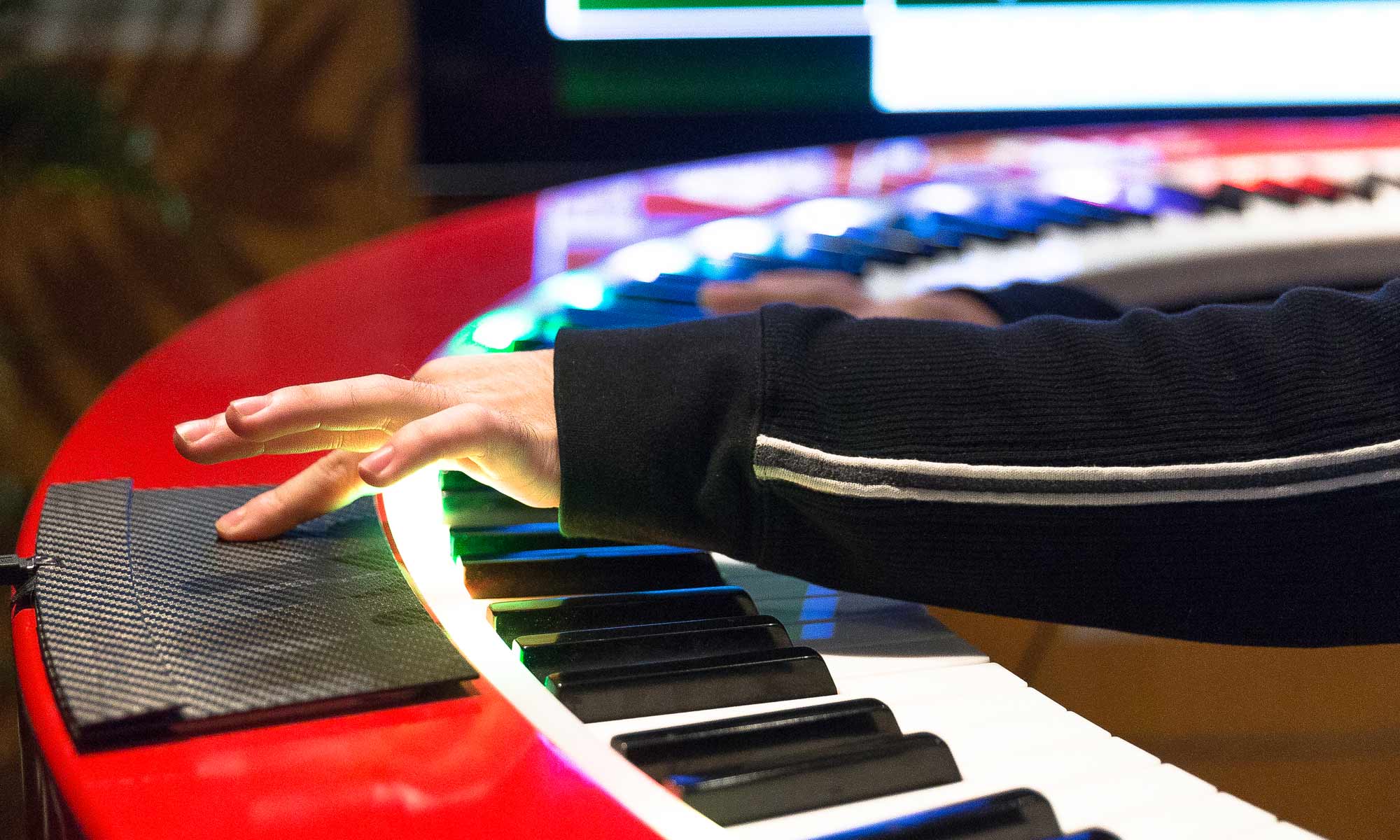Ed note: This page will attempt to keep current with the facts surrounding General MIDI. Posts/comments, tips will be integrated into the content below:
 General MIDI (GM or GM2) lets musical software and MIDI files use a standard “orchestra” of sounds. Without General Midi, many popular music education programs, and certain recording features wouldn’t work.
General MIDI (GM or GM2) lets musical software and MIDI files use a standard “orchestra” of sounds. Without General Midi, many popular music education programs, and certain recording features wouldn’t work.
General MIDI does not determine sound quality – the sound is as good or as bad as the entity (could be software or hardware) that produces the sounds. Educational software and MIDI-interactive software often rely upon General MIDI for “knowing” where to get sounds. Some music production programs have moved away from relying on General MIDI due to the a finite number of sounds and the varying quality of the sounds, but General MIDI continues to play an important part in educational music software.
The Wikipedia article on General MIDI has good technical information and is a good place to learn more.
Key Facts About General MIDI (GM) and it’s descendant General MIDI 2 (GM2):
- Defines a standard “orchestra” of 128 sounds (with many variations per sound in GM2), and drums, percussion (and sound effects in GM2).
- General MIDI sound quality is defined by whatever produces the sound – it can be fantastic – or it can be horrible! The options are outlined in the table below.
- Many portable keyboards and digital pianos have built-in general MIDI sounds that vary widely in quality.
- Microsoft’s implementation of General MIDI (GM Wavetable synth) is a poor sounding-latency plagued source of General MIDIsound (this hasn’t changed since it was first introduced in the ’90s).
Myths about General MIDI:
- General MIDI sounds bad. No – it sounds as good, or as bad as the source of the sound – which varies widely. The default PC and Mac sounds are inferior to many offered via Soundfont and Keyboard-based sound. See options table below .
- No one uses General MIDI anymore: Wrong! Educational music software relies upon General MIDI.
General MIDI options:
| General MIDI Sound Source | Practical “live” use considerations | Sound Quality | Notes/Considerations |
|---|---|---|---|
| Windows Desktop PC with Creative Labs Soundcard that supports Soundfonts.. | MIDI IN from keyboard then amplify the soundcard | As good as the Soundfont file that is loaded – changeable. | Preferred solution. Integrates all audio into one connection – and offers flexibility in sound qualit via interchangeable soundfonts. Proven reliable and low latency. |
| Sound Module, Keyboard, or Digital Piano with General MIDI sounds built-in. | MIDI IN and MIDI OUT both required.
Cables, separate amplification may be required |
Sound quality varies with manufacturer. Can be very good. Many (but not all) Roland and Yamaha products offer excellent “default” GM sounds. | Computer sound and keyboard sound will come from separate places – and may have to be “mixed” back in together for recording applications. . |
| PC Laptop or system with GM Wavetable Synthesis | MIDI IN – Latency problems | Acceptable to some. Not to others | Generally unacceptable Latency and inhibits performance as “live” performance sound source.
See Article: Licensed from Roland to Microsoft in 1996. |
| Mac System (Quicktime Musical Instruments) | MIDI IN | Acceptable to some. Not to others (similar to GM wavetable synth). | MacOS brings latency to a reasonable level acceptable for most live playback applications.
See Article: Licensed from Roland in 1997 |
| Other Soft Synthesis (VSampler, Bandstand – discontinued, MUSE etc.) | MIDI IN | Varies, but can be very good. | Demanding on Computer System resources – requires special configuration- most General MIDI Synthesis is accomplished via special “plumbing” that is not widely supported. |
